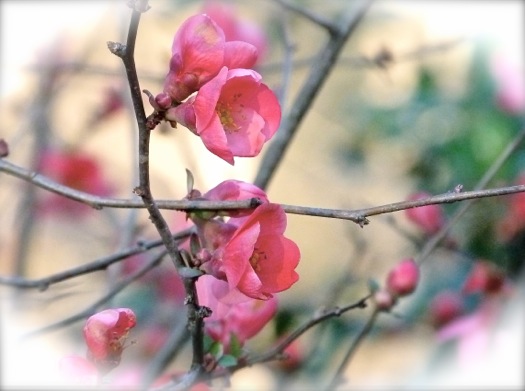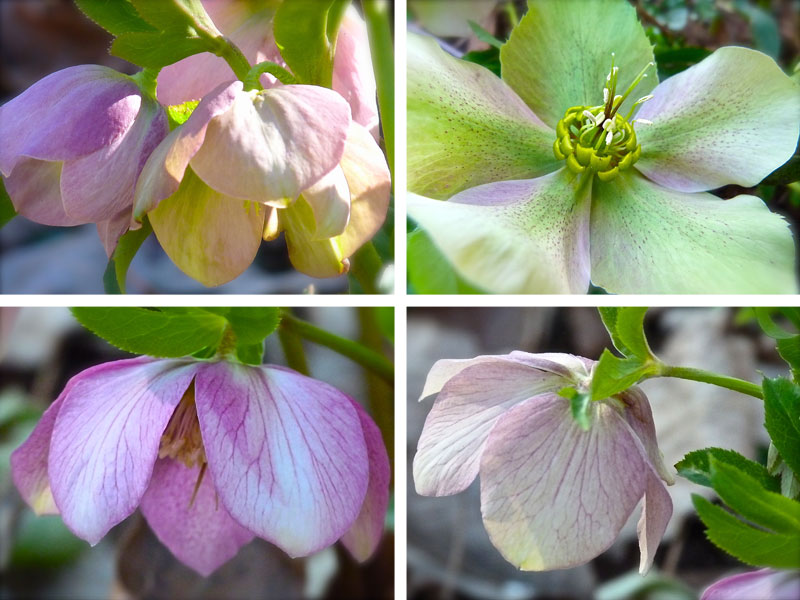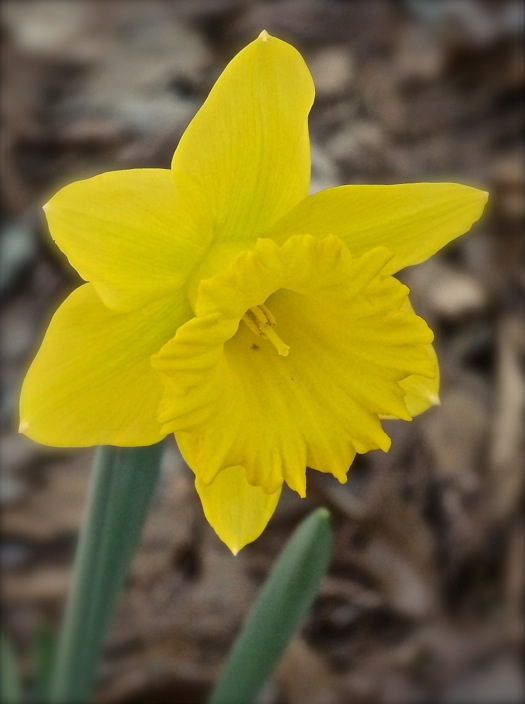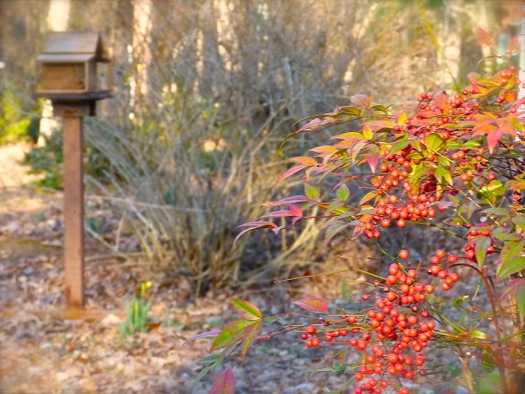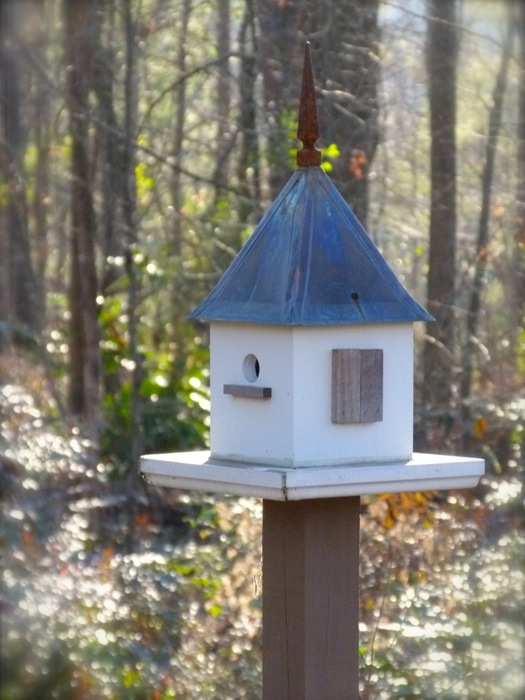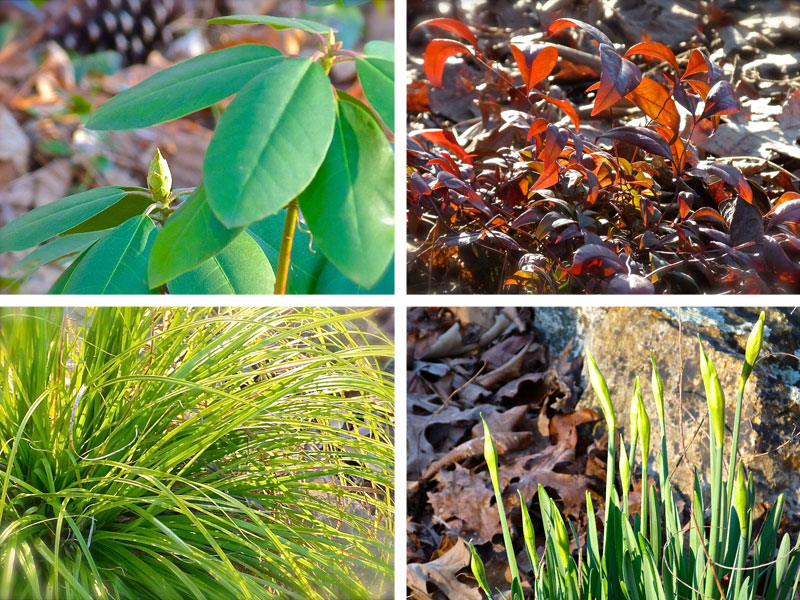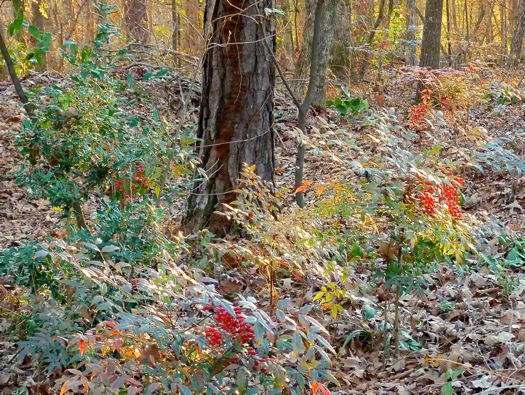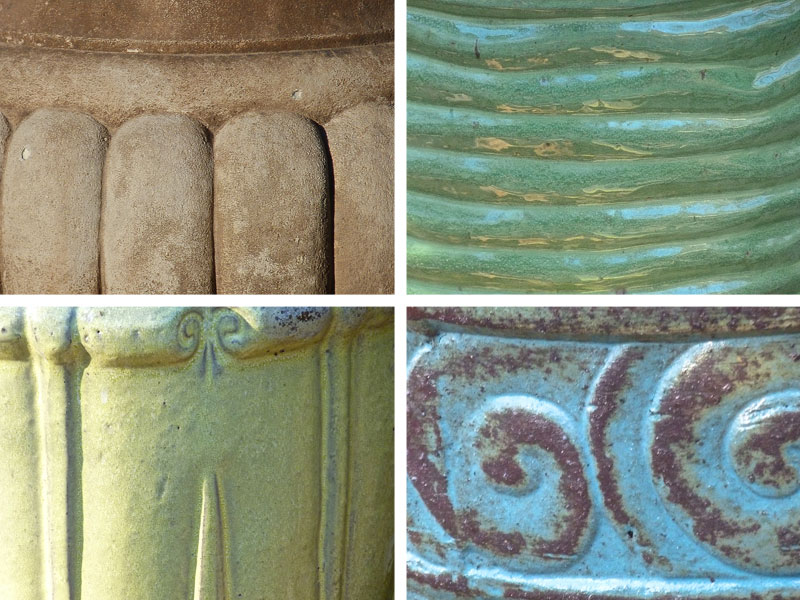Camellia 'Something Beautiful'
 Sunday, December 20, 2015 at 6:00PM
Sunday, December 20, 2015 at 6:00PM I caught a glimpse of something pink in the woodland garden as I was driving away from my house last week. I was going too fast to be certain, but from its location I thought it had to be Camellia japonica 'Something Beautiful.'
Blooming at last! This plant has been a disappointment since I planted it several years ago. Each year it produced only two or three blooms, though I know one sometimes has to be patient.
Growers often create an artificial environment that stimulates early, heavy bloom set that attracts buyers but promptly stops when the plant encounters normal garden conditions. It may be several years before the plant adapts and begins to produce abundant blooms again. Very young plants especially may need several years to mature. Too much or too little water, extreme cold, or insufficient light are also causes of poor bloom production.
When I went to check, it was indeed 'Something Beautiful,' finally living up to its name. It wasn't smothered in blooms, like some of my other camellias, but there were enough to impress. 'Something Beautiful' is a Southern favorite, with pastel-pink flowers, edged with darker burgundy. My particular plant produced a variety of blooms, as you can see here.
'Something Beautiful' is a Southern favorite, with pastel-pink flowers, edged with darker burgundy. My particular plant produced a variety of blooms, as you can see here.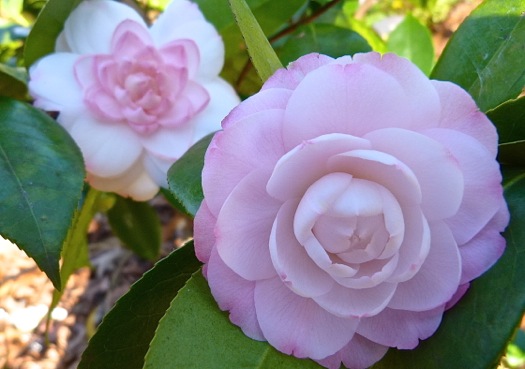 All of the flowers in this post came from the same plant at the same time.
All of the flowers in this post came from the same plant at the same time. 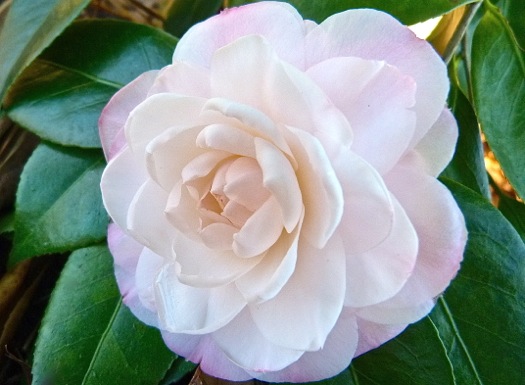
'Something Beautiful' is a bushy, upright grower, reaching 10-12' high x 3-10' wide. It has glossy, oval evergreen leaves. It will grow in US hardiness zones 7-8, and it will produce blooms from winter into spring in acidic, well-drained soil, high in organic matter.
To encourage good drainage it is important to plant all camellias high, with their trunk bases above the soil line. Protect the roots with mulch and keep the soil moist but not soggy. Light shade under the canopy of tall, deep rooted trees that allow sun to filter through is ideal. To promote good health, keep spent blooms and fallen leaves cleaned from under the shrub. Wait until blooming has finished in early spring to fertilize. Camellias don't need a lot of fertilizer; once every two or three years may be sufficient. When you do fertilize, use an organic fertilizer created for acid loving plants. Any pruning should also be done immediately after the plant has finished flowering.
Here in the Deep South, winter is the perfect time to plant camellias; consider this one when you want something beautiful!
